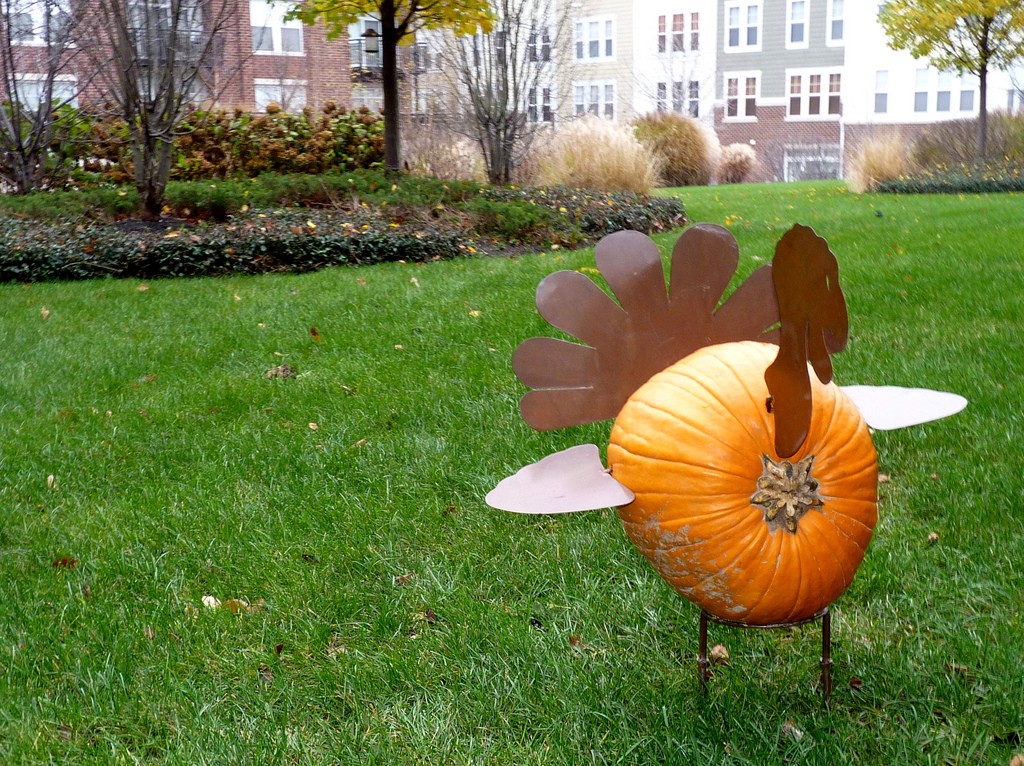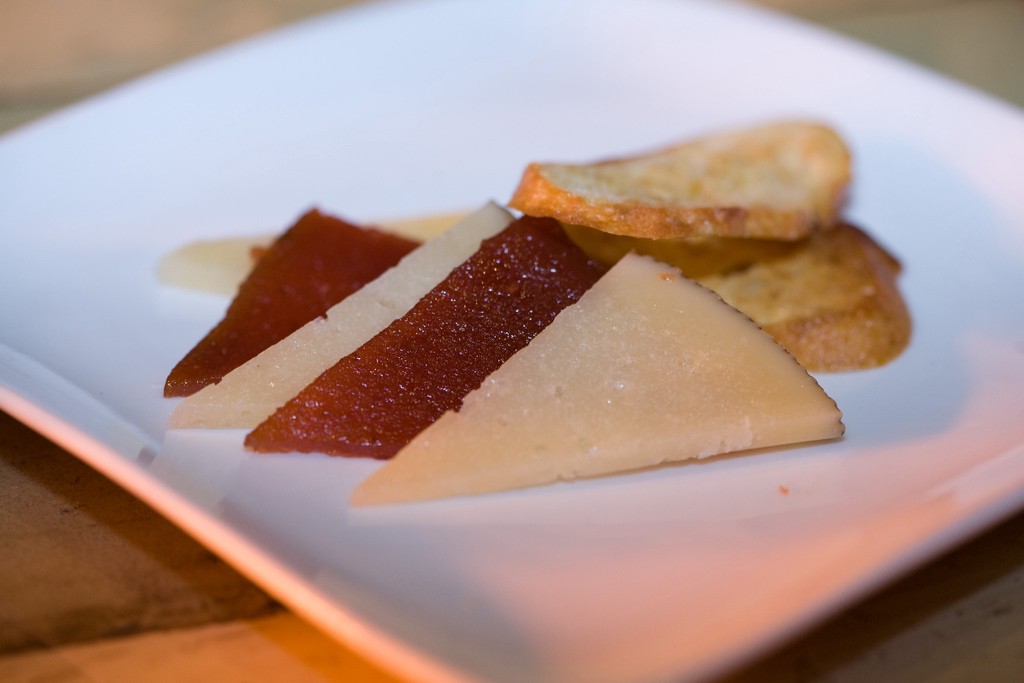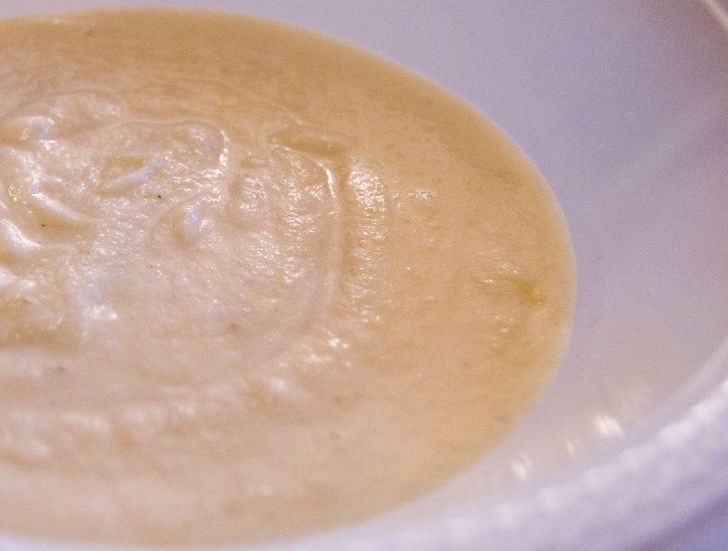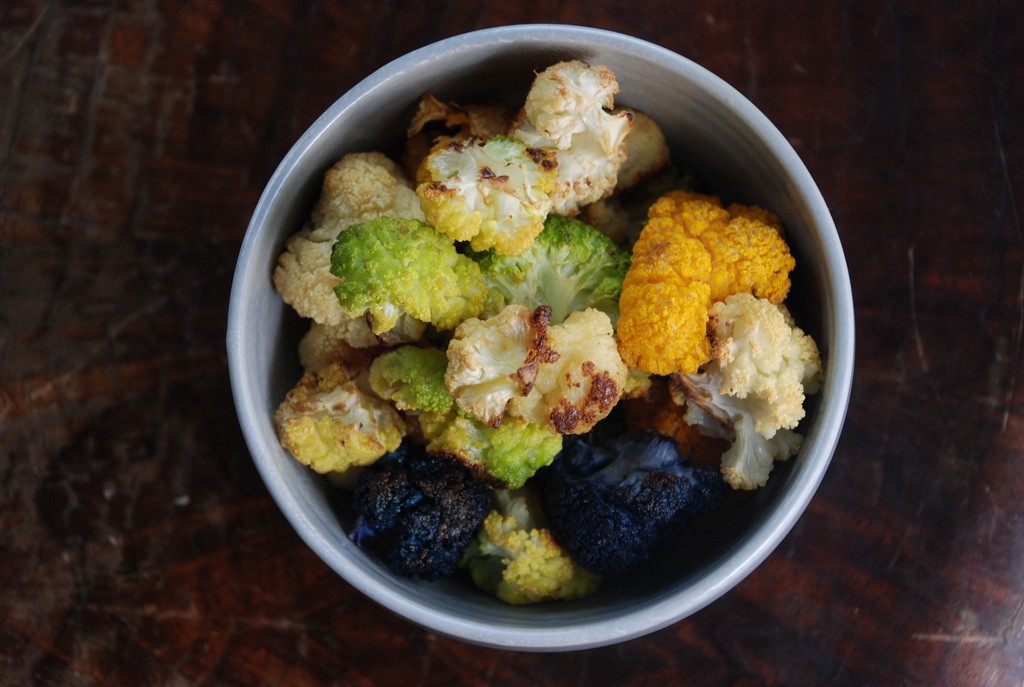How to Successfully Hijack Your Family's Thanksgiving

A few years ago, I decided I would no longer be a passive consumer of food at Thanksgiving, but an integral part of the cooking process. My family’s Thanksgiving is mildly progressive: It begins with a platter of lox and chopped liver (which I thought was a traditional Thanksgiving starter until I was fifteen); our sweet potatoes are twice-baked, with dried cranberries and pecans; our gravy is an elaborate concoction of turkey stock and mushrooms and roux; and our pumpkin pie is sometimes a whipped pumpkin mousse.
To this, I decided I would add a vegetable, and settled on Brussels sprouts, done in a sort-of Momofuku style, deep-fried and served with a fish sauce vinaigrette. I didn’t have a deep fryer, so it took hours to make as roommates stood by with bags of flour and pot lids ready to stamp out any fire that might be caused by me basically just guessing at how to deep fry with a four-dollar thermometer and a soup pot full of oil. It turned out really tasty, I thought. When I brought them out, crispy and browned on a big platter with a nice gravy boat full of my perfect sweet/sour/umami/spicy vinaigrette, I thought I’d be the toast of Thanksgiving. For years to come, my family would say, “Remember Dan’s Brussels sprouts? Hope he brings those again this year. And also his anecdotes were really charming.”
I placed a few sprouts on my mom’s plate, dressed them with the vinaigrette, and waited. She tried one. “Oh,” she said. “It’s really interesting.” The sprouts remained at the end of the meal, maybe half gone; I probably ate most of them. But I learned my lesson: Thanksgiving is not a time to be edgy, trendy, or challenging. But! I think there are a few ways to bump up the tastiness of Thanksgiving while still staying true to the flavors and themes of the meal. And, guess what? They all involve fruits and vegetables.
Thanksgiving is the only harvest holiday a lot of Americans celebrate, and the traditional dishes are so ingrained in us that we tend not to even know why we eat this stuff, just that it is what one eats on this day. Which is great: It’s kind of where I’m hoping our current food obsession takes us, to a future where we just naturally eat what’s in season, not because that’s the trendy thing to do but just because, well, that’s what we do. In that way, Thanksgiving isn’t just one of the most traditional American holidays, it’s also very forward-looking.
I mostly love traditional Thanksgiving dishes, because who wouldn’t? Turkey is hard as hell to do right, but when it is, it’s ridiculously rich and flavorful. Labor-intensive dishes like stuffing and gravy are ceremonially prepared. People who normally never eat sweet potatoes do. Green beans and cranberries cut through the richness and fat of the rest of the meal with crispness and sweet-sour bitterness, respectively. These flavor combinations are great. They are thoughtful, sophisticated, balanced classics.
But I look through the many, many Thanksgiving tips and recipes that litter the internet this time of year, and I think they sort of miss the point in some ways. The Times, for example, has a beautiful splash page with dozens of Thanksgiving recipes, most of which look really tasty, but would provoke the same reaction my mom had at eating those deep-fried sprouts, because they miss the really essential thing about crowd-pleasing Thanksgiving fare, which is not to bring new flavors to the five or so traditional ingredients — it’s to use familiar autumnal flavors. If there are new ingredients though, that’s just fine.
I’ve taken the liberty (lol) of planning out a whole menu of additions, from hors d’oeuvres to dessert, with that in mind: traditional fall flavors, prepared simply, to emphasize the great things about Thanksgiving.


APPETIZERS
Homemade Membrillo With Manchego: So this appetizer can either be sort of tricky or the easiest one you’ll ever make. depending on whether you buy membrillo or make your own. Membrillo is a paste made out of quince, a hard fall fruit somewhere in between an apple and a pear in appearance. (This recipe is not mine; it’s from here, with a few changes. The main difference: I use vanilla extract instead of a vanilla pod, because who am I, Donald Trump?)
For the hard way: Basically, take about four or five ripe quince (you’ll know when they’re ripe when they’re completely yellow and smell sweet and fruity), peel, core like an apple, and chop into smallish pieces. Throw them in a pot with some lemon zest and boil until tender. Drain, then blend somehow; an immersion blender is fine, though I like a food processor for this because it makes a smoother paste. Put the quince puree into a sauce pot, along with an equal amount of sugar, plus a few drops of vanilla extract and a squeeze of lemon juice. Stir over low heat until the paste turns this really lovely amber color. This will takes forever — more than an hour. You don’t have to stir it the whole time like you would with polenta, but go back every few minutes or so to make sure it’s not sticking or burning. Then preheat your oven to really low, like 120 degrees if you can, and butter a square baking tray liberally. Pour the membrillo into the tray and bake for about an hour, until set. To serve: Cut the membrillo into squares, then the squares into thin square slices. Place a slice of some kind of sharp cheese — manchego is traditional, cheddar works just fine — on top. You can put this on a cracker, if you want.
If you don’t want to bother with making your own membrillo, here’s the recipe for this appetizer: take some store-bought membrillo and put some cheese on it now you’re done.
Delicata Squash Crostini: Delicata squash, oblong, usually pale yellow with grooves of green running down its sides, is sort of an in-between squash; it’s in season now, but it has qualities of both summer squash like zucchini and winter squash like butternut. Its flesh is sweet and roasts to a near-mush, the way winter squash does, but the skin is edible, and the flavor is not quite as heavy as, say, a butternut or an acorn. To prepare: slice lengthwise, and scoop out the stringy guts and seeds, reserving the seeds and throwing out the guts. Wash and carefully dry the seeds — a salad spinner might be helpful for this — then lay down in a single layer and roast in a toaster oven set to 350 degrees until they lightly browned and crisp. While the seeds are roasting, slice the squash halves into half-moons about half an inch thick, toss in oil, salt, and pepper, spread on a baking sheet and roast at 400 degrees until tender in the middle and brown and crispy on the outside. (Do not crowd the pan; the squash will let off moisture as it cooks, and if there’s too much squash per square foot, the moisture will cause the squash to steam, ew.) Don’t be shy about the oil.
While the squash and its seeds are roasting, make your pesto. Take sage leaves, parsley leaves, and walnuts in about a 4:1:1 ratio, and blend in a food processor with a lot of olive oil. Add a squeeze of lemon.
To serve: take a toasted slice of baguette or whatever bread-like item you want, spread ricotta cheese over the bread, then add maybe a quarter as much sage pesto in the middle of that. Lay down a slice or two of roasted squash and finish with a few squash seeds and a squeeze of lemon, or pomegranate molasses if you have any.
AUTUMNAL SALAD
Fennel, Raw Beet, And Walnut Salad With Persimmon Vinaigrette: Real good crunchy sweet salad here. Get a handful of walnuts and put them on that little toaster oven baking sheet and toast them at 350 degrees in your toaster oven until browned but not blackened, maybe 10 minutes. Take a bulb of fennel, trim off the stalks, and shave the outside of the bulb with a peeler or just carefully with your knife (the outermost layer is a little stringy). Cut in half through the root, lay it on the cutting board flat side down, and slice width-wise thinly. Get some pretty beets — chioggia, the candy-striped ones, if you can get them — and trip off the root. Lay it down on the flat side you just cut, and with your knife, working from the top, shave off the peel in vertical strips, losing as little flesh as possible. Then cut the beet in half from top to bottom and slice thinly into half-moons. Throw this all in a big bowl, along with a some bitter greens like frisee or chicory.
Take a hachiya persimmon, the kind of pointed one, and make sure it’s beyond soft, all over — it should be squishy and feel like there’s no way it’s not rotten. Cut off the top, and using a spoon, scoop out all the guts. Throw that in a food processor and blitz until smooth. Then add in about a tablespoon of white wine or champagne or even apple cider vinegar, adding it slowly then mixing then tasting to make sure it’s not too sour, and then, while the food processor is spinning, slowly pour in olive oil through the hole in the lid, about as much olive oil as vinegar. Taste and adjust; if too oily, add more vinegar or persimmon: if too sweet, add more vinegar, if too sour, add more persimmon. When it’s just right, pour over the vegetables and toss, seasoning with salt and black pepper. Add toasted walnuts, some reserved fronds from the fennel stalks, and, if you want, some goat cheese at the end.

REAL GOOD VEGETABLES
Roasted Endive With Walnut Vinaigrette: Endive, in the dandelion and chicory family, is a slightly bitter winter vegetable consisting of a whole lot of nested leaves, sort of like a jumbo, boat-shaped Brussels sprout. Here’s a real simple recipe. Preheat your oven to 425 degrees. Then take a whole bunch of endives, trim off the root, and slice in half lengthwise. Take a baking sheet and pour some oil in it, then place the endives an inch or two apart, cut side down, before drizzling some more oil on top and sprinkling with salt and pepper. Roast until the cut side is browned and the endive is soft the whole way through, which is going to take longer than you’d think — probably at least an hour. While that’s roasting, make your vinaigrette.
Break walnuts, if whole, into smallish pieces, toss in a little olive oil, and spread evenly on your tiny toaster oven baking tray. Roast at 400 degrees until toasty, which should take about thirty to forty-five minutes. Chop up one shallot very small and put it in, preferably, a glass Tupperware thing. Pour in some white wine vinegar and a squeeze of mustard over the shallot. (Dijon is classic, but I use spicy brown deli mustard because I have the palate of an old Jewish man.) Let that sit for a little while. Then add in an equal amount of walnut oil as vinegar/mustard. (This is more vinegary and less oily than most vinaigrette recipes call for. I am aware of that, but am also firm in my belief that a sauce that is seventy-five percent oil is gross.) A note about walnut oil: it is very tasty, but like a lot of nut oils, goes bad pretty quickly, so be careful. When the endive is done, take it out of the oven, turn it upside down so the amazing-looking cut sides are facing up, and sprinkle the roasted walnuts over them. Then pour the walnut vinaigrette over the whole thing.
Sunchoke Puree With Parsley Pesto: Sunchoke, or Jerusalem artichoke, is the tuberous root of a plant in the sunflower family, and it’s native to the entire eastern coast of North America, from Canada on down to Florida. It’s in season now, and makes a real nice alternative or addition to the typical mashed potato; it’s a little bit lighter and sort of nutty in flavor, which is nice. You can cook it pretty much the same way you’d make mashed potatoes: cut into smallish pieces, boil until tender, then puree or mash with some fat and salt and pepper. I like to add cheese of some sort to my mashed tubers, no matter what they are, so after they’re tender, drain the pot of water and add a heaping spoonful of either cream cheese or a mild chevre to the pot, along with some milk and a little butter. Sprinkle in a touch of nutmeg to emphasize the sweetness of the sunchokes, add a lot of salt and pepper, and combine somehow. For sunchokes, I actually prefer a smoother blend; I like a good chunky mashed potato, but sunchokes are so much lighter that a smooth puree doesn’t feel as glue-y as mashed potatoes can. Throw this in a food processor until smooth. Spoon it onto people’s plates and top with some dabs of parsley pesto, which is: one bunch of parsley leaves, washed, plus a clove of raw garlic, a small handful of toasted walnuts, and a lot of olive oil, tossed into a food processor until smooth.

BIG MAIN DISH
Roasted Brassicas With Pomegranate And Hazelnuts: So, there is a trend to roast brassicas, especially cauliflower, whole. I have mixed feelings about this. It certainly is a dramatic, impressive presentation, and anything that encourages people to roast more cauliflower sounds good to me! But I think this is not a great way to do it, since by cutting the cauliflower into small pieces, you increase the surface area and the amount of cauliflower that actually touches the pan, which will then get especially browned and crispy and seasoned. The more of that the better! I have tried the whole-cauliflower thing just enough times to say that I don’t think it works that well.
Instead, opt for a big platter of a melange of brassicas. Get one head each of a few kinds of brassicas: purple, orange, or white cauliflower; broccoli; and romanesco. Cut them all into pieces no bigger than a golf ball, and then cut them in half, so each piece has a substantial flat surface. Take each brassica and put them in a mixing bowl and toss with a lot of olive oil, some thinly sliced onion (about half an onion per head of whatever you’re using), some fresh or dried thyme, and a handful of hazelnuts (get the pre-blanched ones that are already peeled and white). Keeping each type of brassica separate, spread them on an oiled sheet pan. Turn them so the cut, flat side of the brassica faces down on the pan, making sure that there’s at least a centimeter of space between each one. You should have one sheet pan with each different kind of brassica on it, because they all have slightly different cooking times, and because keeping them separate will keep their colors bright and not muddied. Yes, this is a huge pain, but, you know, it’s Thanksgiving!
Roast them at 400 degrees until the bottom of the brassica — the flat side that’s touching the pan — is golden brown and almost looks like you’ve deep-fried it. When they’re all done, mix them all up in a platter with salt and pepper, and top with a handful of pomegranate seeds, a squeeze of lemon, and maybe another drizzle of olive oil.
Pomegranates are also in season right now, though I don’t think the Pilgrims ate them. Still! My preferred method of tackling a pomegranate is to take my shirt off (the juice leaves a powerful stain), then make a slit just deep enough to get through the skin and hold my knife at that depth while rotating the pomegranate to make an equatorial cut through the fruit. It’s sort of the same way you’d open an avocado except you don’t cut very deeply. Then dig your fingers into this gouge and pull apart slowly but firmly, and the pomegranate should break into two pieces. Do the same thing on the skin of each pomegranate half to cut and then break them into quarters. Then get a big bowl of water and hold each quarter under water while gently scraping the individual arils off. The arils will sink to the bottom, and the inedible white pith will float. Easy! I mean, not easy at all, but pomegranate tastes great, so.
DESSERT
Pear Crisp With Cardamom: I can’t bake, at all. I fear it. I fear having to measure, and not being able to adjust mid-way through if something goes wrong, and the sorcery that is dough-making. This is a sweet dessert that does not really require baking. Get five very ripe bosc pears — they’re rotten by the time they’re soft to the touch, so what you’re actually looking for is a little bit of wrinkling up top, around the stem, and for just that little part of the pear to be slightly soft; the rest of the pear should still be quite firm.
Preheat the oven to 400 degrees. Slice the pears into inch-long, fairly thin slices. In a cast iron pan, melt a few tablespoons of butter, and when it’s melted, add a few teaspoons of salt and a teaspoon of ground cardamom. Add in the pears and stir to combine. Separately, in a big bowl, combine about a cup of rolled oats, a few tablespoons of all-purpose flour, half a cup of dark brown sugar, a few grinds of salt, a couple drops of vanilla extract, and a teaspoon of cardamom (again). Take a stick of cold butter and drop it in the bowl, mushing all the other stuff into it until the butter is basically dispersed. Mark Bittman, whose recipe is close to mine, adds nuts to this mixture. I don’t like nuts in my crumble but I guess it wouldn’t be crazy to add some chopped pecans here.
Spread the oat mixture evenly over the top of the pears, then put the whole pan in the oven until the topping is crispy, about forty-five minutes to an hour. Serve with a relatively neutral ice cream, like vanilla or dulce de leche.

What I learned from my disastrous experiment with fish sauce and sambal oelek is that Thanksgiving is a bit of a high-wire act. It’s a culinary holiday, and the desire to impress is built into it. (I mean, why else would anyone roast a turkey whole when it’s the worst possible way to cook that bird?) But people have expectations. We expect fall flavors; we expect seasonal produce; we expect a pattern of dishes that matches our taste memory from last year and the year before. While, in most cases, I do not recommend giving people what they want, Thanksgiving is a time to cheerfully give in, to watch football even though it’s somehow both violent and boring, to let your eyes glaze over and think about other things during your uncle’s questionable rants on race relations, and to cook the food your fellow family and friends actually want to eat. Just once.
Photos by Ann Fisher, Charles Haynes, ulterior epicure, and Kristen Taylor
